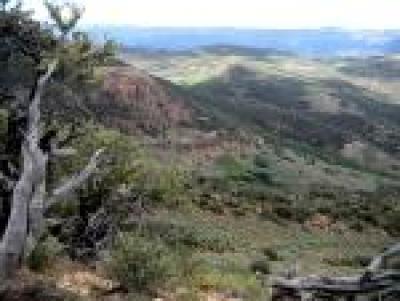(Santa Barbara, Calif.) –– A wide-ranging group of experts has published a set of 40 key environmental questions to help align scientific research agendas with the needs of natural resource decision makers.
The cover story of the April issue of BioScience, written by 30 co-authors, contains the results of a process in which 35 participants solicited and synthesized questions about science relevant to natural resource management. Questions were submitted by 375 individuals who are involved with natural resource policy, management, or study.
The first author is Erica Fleishman, a researcher with UC Santa Barbara's Bren School of Environmental Science & Management and the John Muir Institute of the Environment at UC Davis. She and six colleagues –– David Blockstein, National Council for Science and the Environment, Washington, D.C.; John Hall, U.S. Department of Defense, Arlington, Va.; Michael Mascia, World Wildlife Fund; Murray Rudd, Environment Department, University of York, Britain; J. Michael Scott, U.S. Geological Survey; and William Sutherland, Department of Zoology, University of Cambridge, Britain –– led the effort with a grant from the Kresge Foundation.
"The questions focus on assessing trade-offs among economic, social, and ecological issues," said Fleishman, adding that it is important to determine how to encourage communication among the generators of information about natural resources and the users of that information. "We created a mechanism where decision makers said to scientists, 'This is what we need to address society's priorities for natural resources.' " Fleishman described the endeavor as a means to facilitate collaboration, and more of a starting point than an ending.
The authors expect that the 40 questions, if answered, will increase effectiveness of policies related to conservation and management of natural resources. They are launching an effort to survey many more individuals about how they would prioritize the 40 questions.
"America's incredibly diverse natural resources are under increasing pressure, and policy makers often lack scientific information to make informed decisions about how to conserve them," said co-author Michael Mascia, social scientist with the World Wildlife Fund. "These 40 questions can help guide research priorities and ultimately give society the information needed to conserve the environment we all depend upon."

This view from the top of the Monitor Range, Eureka County, Nevada, shows a mosaic of vegetation types. Decision makers identified as a high priority research on how species-level and ecosystem-level responses to climate change may be affected by the current configuration of land cover and land use.
(Photo Credit: UCSB)
The questions, which highlight a wide array of environmental issues, include:
What quantity and quality of surface and groundwater will be necessary to sustain U.S. populations and ecosystem resilience during the next 100 years?
How do different strategies for growing and harvesting biomass or biofuel affect ecosystems and associated social and economic systems?
How do different agricultural practices and technologies affect water availability and quality?
How will changes in land use and climate affect the effectiveness of terrestrial and marine protected areas?
The authors present an optimistic view of how their work may promote change: "History provides numerous precedents for transforming crisis into opportunity if the crisis can function as an incentive to action. The Marshall Plan, for example, revitalized economies, diplomacy, and societal confidence in Western Europe following World War II. If changes in land use and climate catalyze greater engagement among researchers and decisionmakers, phenomena with the potential to negatively affect ecological and human systems may lead to similar successes in the conservation and sustainable management of natural resources."